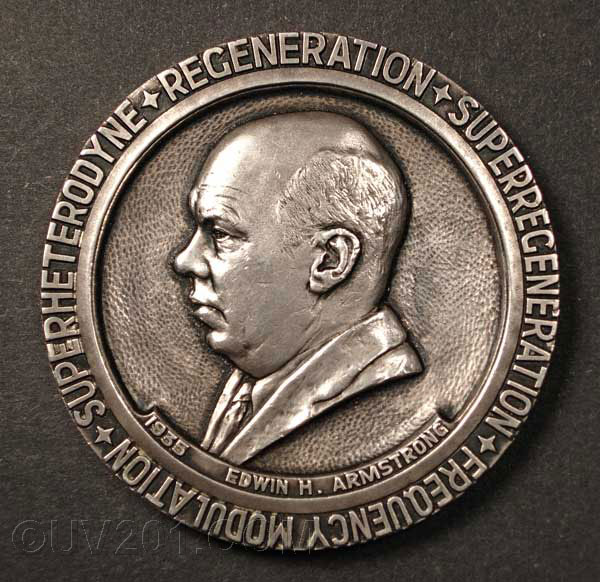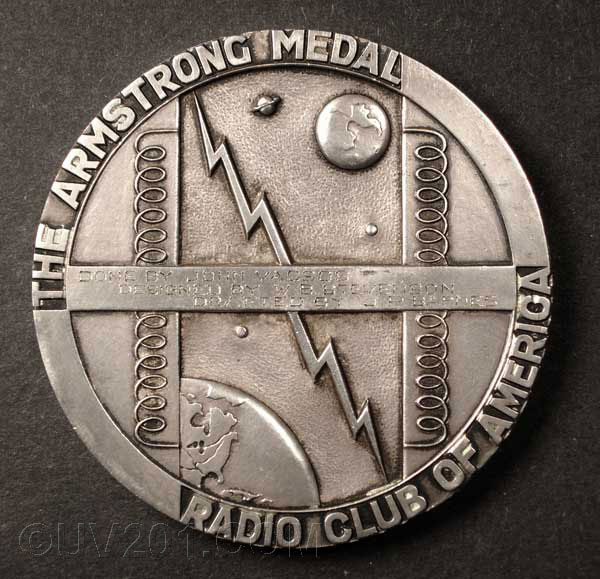|
The Armstrong Medal-1935 |
|
Edwin H. Armstrong was one of the most important contributors to radio technology. Two of his inventions, the superheterodyne circuit and frequency modulation, are the basis of virtually every radio and television, and every other wireless communication device that has been manufactured since the late 1920's. The importance of his contributions cannot be overestimated. Sadly, he committed suicide in 1954, a virtual pauper, worn out by years of bitter litigation over his FM patents. For an interesting article about Armstrong, click here. The Radio Club of America was founded in New York City in 1909 by a handful of teenage boys who had become interested in radio technology. The club flourished over the years, as those boys grew into manhood, and is still in existence today, nearly a century later. The formation of the club predated the formation of the Radio Corporation of America, and the fact that both entities' initials were "RCA" was pure coincidence. In 1934, the club saw fit to honor Edwin Armstrong through the issue of the Armstrong Medal. It was to be awarded to club members whose contributions had added significantly to "radio art and science". For the design, they enlisted the assistance of three individuals who worked for RCA in Camden, NJ. These were John Vassos, W. B Stevenson, and J. P. "Jack" Barnes. John Vassos was a noted author, artist, and industrial designer of the day. He designed the cabinets of a number of RCA products in the 30's and 40's, including the TRK-12, TT-5, and 621-TS televisions, the RCA line of black and chrome Deco radios, and others. Barnes was an artist/draftsman who worked for the design department of RCA Victor, and was responsible for the the RCA phonograph styling studies shown elsewhere on this site. I have no information on Mr. Stevenson. The original medal was crafted in bronze from their design by sculptor Harry Straubel. From that, a mold was made, and 13 actual medals were cast in silver. They are 3 inches in diameter and 1/4 inch thick. The first three medals were given to Vassos, Stevenson, and Barnes as payment for their work. The name of the recipient was engraved on the blank area on the back of the medal. The medal shown here bears the inscription: "DONE BY JOHN VASSOS DESIGNED BY W.B. STEVENSON DRAFTED BY J.P. BARNES'. It was acquired from an antique dealer who got it from the Barnes estate. The remaining 10 original medals were awarded sporadically between 1937 and 1956, as listed below. A second group of medals was produced in the 1950's. A total of 33 of these medals have been awarded, the last in 2003. |


